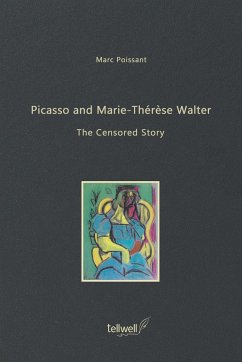In October 1977, Marie-Thérèse Walter was found hanged in her home's garage at age sixty-eight. She was famously known as the "sleeping blond muse," whose relationship with Pablo Picasso ("Pic," as she preferred to call him) had always been extremely secretive. In 1988, Dr. Herbert T. Schwarz published a study where he argued-many scholars later agreed-that he had sufficient evidence proving that the blond muse was already at Picasso's side at age fifteen in early 1925, which is two full years before the date given by Picasso, who always claimed having met Marie-Thérèse on the streets of Paris in January 1927 when she was seventeen and a half. But then, this is also the man who once said, "You must not always believe what I say; questions tempt you to tell lies, especially when there is no answer." Dr. Schwarz' intrusion into the "Marie-Thérèse mystery," if on the right track, was still miles away from the truth; the evidence now shows that Picasso had in fact erased all of Marie-Thérèse's early-life narrative, starting with her family origins, because for anyone to know the identity of her true parents was also inevitably to know that Picasso had to know this young girl right from the crib. This book tries to resuscitate some of Marie-Thérèse's cancelled narrative, as it also tries to unveil the roots and the mechanism of an old disinformation campaign, complete with cover-up, formerly under Picasso's strict control-later under that of his heirs after he passed away in 1973. The scholars and the museums too have known about this hoax for well over a decade now. Regrettably, however, ever since I published my study in 2009, a shabby posture has consistently prevailed within the Picasso intelligentsia: video et taceo, see and keep silent. But isn't that Bob Dylan's Blowin' in the Wind all over again: "And how many times can a man turn his head/Pretending he just doesn't see . . ."
Hinweis: Dieser Artikel kann nur an eine deutsche Lieferadresse ausgeliefert werden.
Hinweis: Dieser Artikel kann nur an eine deutsche Lieferadresse ausgeliefert werden.









